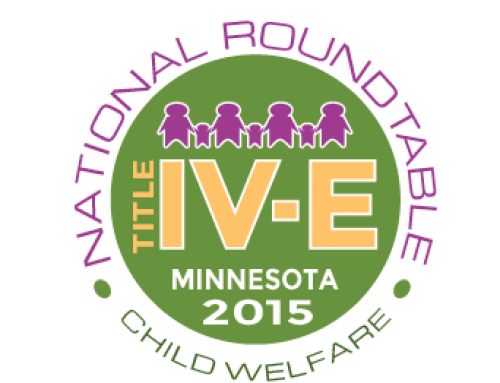10th Annual Spring Child Welfare Conference
Details
Date: April 22, 2009
Time: 9:00 AM-12:00 PM
Location: Cowles Auditorium, Humphrey Institute, University of Minnesota, and broadcast to Greater MN Host Sites
Companion Publication: Spring 2009 CW360°, Permanency or Aging Out: Adolescents in the Child Welfare System
3 CEHs were available for this event. Professor, School of Social Work at the University of Washington and Executive Director of Partners for Our Children Below is a list of questions from distance sites that we were not able to pose to the presenters due to time constraints, as well as some questions that were submitted after the conference through participant evaluations. We extend our gratitude to our presenters who generously gave their time to compile thoughtful responses. Mark Courtney’s response: The reports on the Midwest Study of the Adult Functioning of Former Foster Youth (Midwest Study) include state-specific reports. Those reports compare self-reported service receipt between major urban areas (e.g., Cook County in Illinois and Milwaukee County in Wisconsin) and the remainder of the state. There are some differences in service receipt; service receipt is sometimes, but not always, higher in urban than in rural areas. Mark Courtney’s response: These questions, in one way or another, ask for further clarification of the study findings given that youth in foster care are disproportionately youth of color, and that youth in care come from low-income families. The Midwest Study was not designed to assess the “impact” of foster care placement, net other background characteristics and experiences of foster youth, on outcomes during adulthood; we do not have a comparison group of children and youth who never entered out-of-home care but otherwise exhibited all of the characteristics of the youth in the Midwest Study. The study was designed to assess transition outcomes, and, for the foster youth population, predictors of those outcomes. Such information is useful to policymakers and practitioners as they try to craft approaches to improving outcomes for foster youth in transition. Midwest Study reports demonstrate that young adult outcomes for foster youth in transition are, on average, much poorer than those of other people the same age. The authors of the Midwest Study reports believe that this is evidence of the need for more effective supports for foster youth in transition and reject the argument that foster youth, because they come from low-income families and communities of color, should not be expected to experience any better outcomes than those we observe. Moreover, although the reports focusing on the full three-state sample do not generally allow for much comparison of outcomes between racial/ethnic groups, a reading of the state-specific reports makes clear that outcomes for foster youth are generally poorer than those of their age peers, regardless of race/ethnicity. For example, Iowa’s foster care population is overwhelmingly Caucasian but its outcomes are generally much poorer than those of the national comparison group. Similarly, outcomes for youth outside of Milwaukee County in Wisconsin and outside of Cook County in Illinois (i.e., in parts of those states with predominantly Caucasian foster youth populations) are poorer than for the national comparison group. Mark Courtney’s response: We have not yet conducted analyses that would allow us to answer that question. Mark Courtney’s response: There are no requirements in terms of mandatory employment or enrollment in school, though such developmentally-appropriate activities are certainly encouraged. Since they are adults, the youth must want to remain in care. However, once youth leave care after age 18 and the court closes the case they are not generally allowed to return. Mark Courtney’s response: Different states have different approaches to how the out-of-home care of youth who are both adjudicated delinquents and eligible for child welfare funding (i.e., Title IV-E funding) is funded and supervised. This is certainly true for the three states in the Midwest Study, and their systems differ in significant ways from Minnesota’s. The Midwest Study included adjudicated delinquents who had initially entered out-of-home care due to abuse, neglect or dependency, but it did not include youth who first entered care through the delinquency system. Mark Courtney’s response: Voluntary placements were not included. Since the study eligibility criteria required that youth had been in out-of-home care for at least one year there would have been few if any voluntary placements even if we had not chosen to explicitly exclude them. Mark Courtney’s response: Seems like this is something that you might want to do a seminar on! While I am aware of research on the employment and post-secondary education returns of GEDs vs HS diplomas, I am not an education researcher and would rather not get into answering a fairly complicated set of questions on this topic. Mark Courtney’s response: Midwest Study reports include data on the number of foster youth who use drugs and alcohol and that experience substance use and abuse disorders. The number of foster youth experiencing these disorders is troubling, especially for males. Our ongoing analyses of adult outcomes (e.g., crime) do suggest that substance abuse is a predictor of poor outcomes during the transition to adulthood. It might be that the foster care agency wants the parents to assure that the older kid’s bed is available for another placement- although that would be pretty harsh (and unusual, I think). Most likely, I suspect that the agency is trying to follow the law in terms of what adults are permitted to live in foster homes. Once that young man turned 18, the child welfare system views him as an adult (unless he has some grounds to request extended foster care). This is a good example of the fact that foster care is designed to be a temporary resource. As a rule, whole families of children are not supposed to spend years in foster care. If the siblings are youth under guardianship of the commissioner of human services, adoption would help the situation. If the siblings were adopted by their foster parents, there is a provision in licensing rules that allow for a variance for some disqualifying offenses committed by a child prior to his/her adoption. Elizabeth Hinz’s response: Students who are homeless do have the right to enroll in school immediately, although staying/living in foster care or group homes is not included in the McKinney Vento Education definition of homelessness. Any student enrolling in a school district with an IEP has the right to immediate enrollment, but getting the student placed in an appropriate educational environment cannot necessarily happen in 1-2 days. The student could be placed in a school, but when the IEP and other records are reviewed the student may have to be moved to another setting to get the staffing, materials, and environment specified in the IEP. I suggest that you contact the Special Education Director for the school district. If all else fails, you can contact RuthEllen Luehr, Coordinator of Homeless Education, at MN Dept of Education, 651.582.8403. This forum has been developed under the auspices of: Federal Title IV-E Funding, Minnesota Department of Human Services (Contract #439481), The Center for Advanced Studies in Child Welfare at the School of Social Work in the College of Education and Human Development.
Participant Packet (includes Agenda)
Keynote Presenter
Mark Courtney
Panel Presentation
Michelle Chalmers, Co-Executive Officer of Ampersand Families
Claire Hill, Consultant, Adolescent Services, MN Department of Human Services
Elizabeth Hinz, Liaison for Homeless and Highly Mobile Students for the Minneapolis School DistrictQ & A
This was a free, live teleconference sponsored by the Center for Advanced Studies in Child Welfare (CASCW), School of Social Work, University of Minnesota—Twin Cities, to your county ITV site and made possible by a Title IV-E training grant administered by the MN Department of Human Services.



